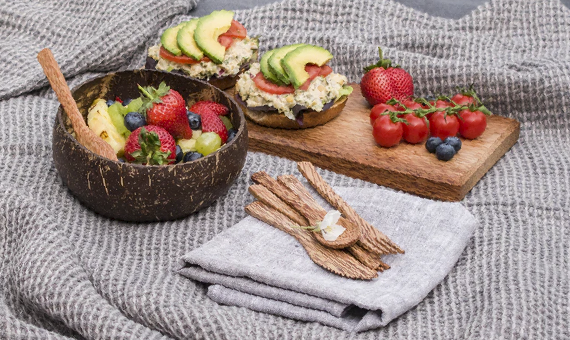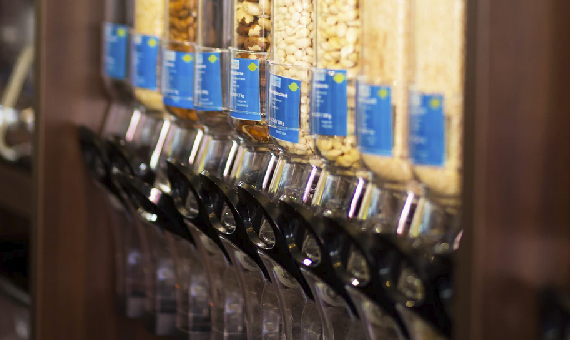Bea Johnson, a French environmental activist, and her family can save all the waste they produce over the course of a year in a single glass jar. This achievement, which is already quite impressive as a fact in and of itself, takes on a whole new level of merit when we take into account that on average each person generates 740 grams of waste per day, according to the World Bank. Per person, this represents more than 5 kg (11 lbs) per week and 270 kg (595 lbs) per year.
The World Bank Group’s report What a waste 2.0 reveals that even though the countries with the highest incomes represent only 16 percent of the world’s population, they generate approximately 34 percent of its waste. This is why the zero waste movement, which encourages people to take an active role in reducing the waste they produce, is relevant: it provides some practical keys to sustainable consumption and a more reasonable level of waste generation, and at a time when humanity — from the vantage point of the current climate emergency — has to rethink its habits.

Like the popular aphorism, “less is more” but with a twist, “zero is even better”: The best waste is that which is never produced. Reducing our waste to such a drastic extent that our annual output could fit into a jar is herculean undertaking. Nevertheless, there are still some simple day-to-day tips — shared below — that we can follow that will help reduce the waste we generate by a significant percentage.
Zero Waste Principles
The zero waste movement is known as the “movement of the five ‘r’s,” which correspond to the initials of the principles defined by Johnson in her book: Zero Waste Home: The Ultimate Guide to Simplifying Your Life by Reducing Your Waste. The five principles are:
- Refuse to bring home what you don’t need. Everytime we accept a freebie or knickknack that we don’t need, we create demand for more to be produced. In her book, Johnson provides the example: every time we take the “free” soap and shampoo samples from hotel bathrooms, they have to be replaced with new, fully-filled bottles.
- Reduce what we do use.
- Reuse what we can. If it is possible to reuse an item for longer, even if it requires a small repair, we should try to. Buying secondhand and re-usable (rather than single-use) items is also encouraged.
- Recycling what we cannot reject, reduce, or reuse.
- Rot: use composting to decompose organic matter.
Tips for reducing waste
The principles outlined above can, for practical purposes, be converted into simple, concrete actions. Below we describe some of the things you can do.
Buy in bulk and use cloth totes
One of the simplest grocery store habits to adopt is to buy products in bulk whenever possible so you can take just the amount you need. Bring your own jars or Tupperware containers to fill them up. It has become commonplace to see people at the grocery store with cotton bags brought from home, which they use instead of plastic bags for their fresh produce. Another good eco-idea is to choose seasonal, local products thus avoiding the environmental cost associated with transporting products from the other side of the world.

Tap water
In her book, 101 Ways to Go Zero Waste, Kathryn Kellogg provides the fact: 3 liters of water are needed to produce a single liter of bottled water. If the water quality in the area is good, it is recommended to consume tap water instead of buying bottled water. When you are out and about, fill your own reusable bottle straight from the tap. If taste is a problem, there are filtering systems that can be used to treat tap water.
Recyclable packaging
Above all else, the zero waste movement advocates for less waste produced, avoiding the need to recycle. In those cases where it is not possible to buy a product without packaging, we can try to choose the least harmful packaging. First of all: the larger the container, the better because the product to packaging proportion will be better. Cardboard, glass, and aluminum are the most easily recycled materials so should receive preferential treatment as we fill up our shopping cart.
Say goodbye to plastic and paper kitchenware
Energy and water consumption for washing dishes is much less than the energy/water consumption required for manufacturing disposable kitchenware. And there is no residual waste produced when using dishes that need to be washed. “Using real plates and flatware is an easy way to reduce your energy consumption.” writes Kathryn Kellogg. This also applies to away-from-home consumption: use a real cup at the café instead of a disposable one.
Avoid consuming products that are harmful to the environment
Countless environmentally damaging products might be hidden in our closets, drawers, and other forgotten storage areas in our homes. Such might be the case for items we might not think: glitter, some kinds of tea bags, or coffee capsules, for example. Stop using them. Replacing them with more sustainable alternatives is another simple habit that can help us reduce the environmental footprint made by our domestic activities.
Comments on this publication